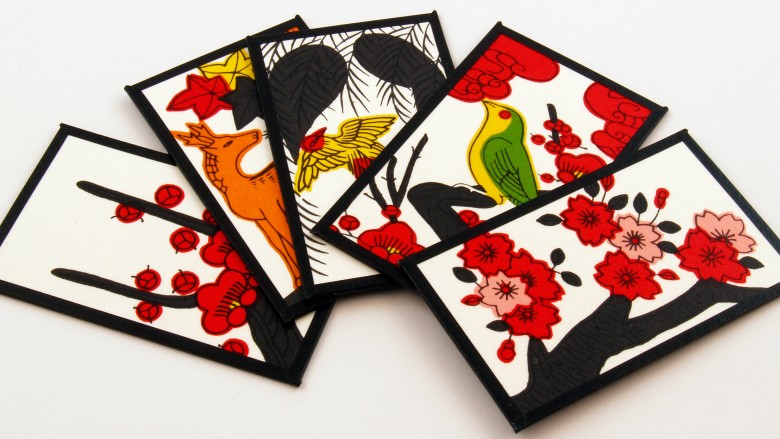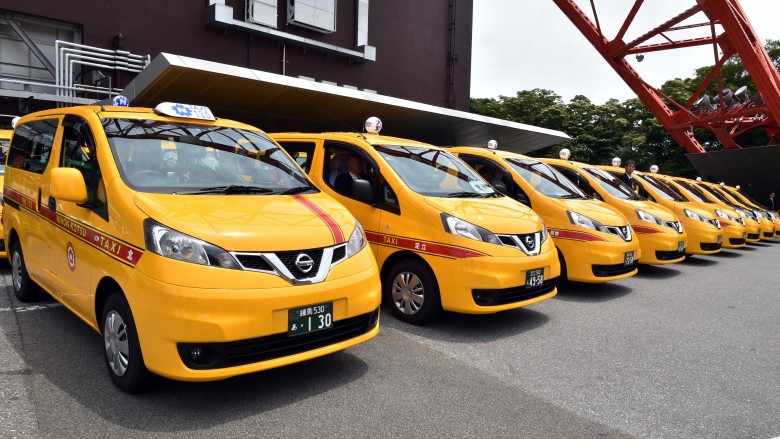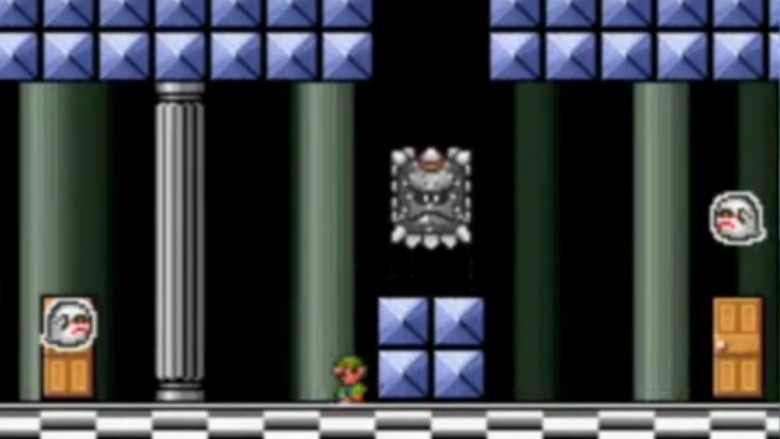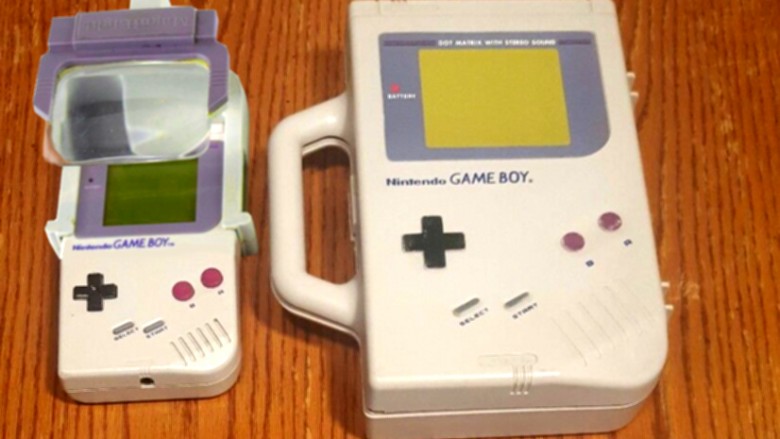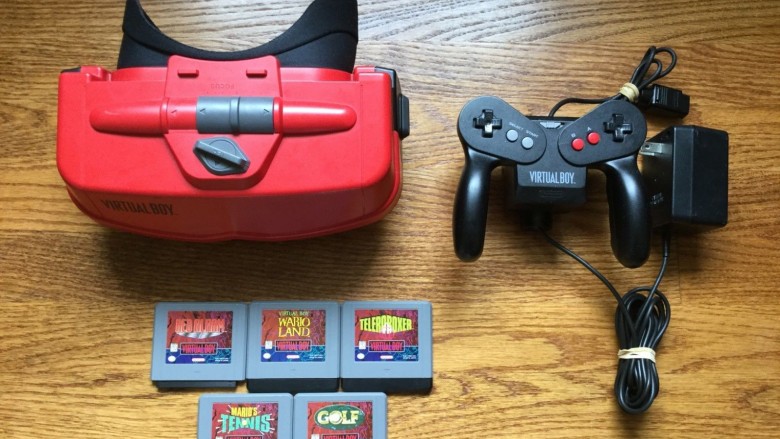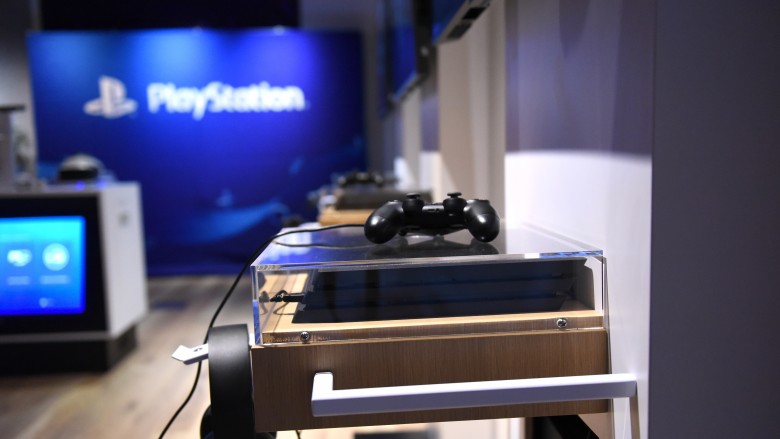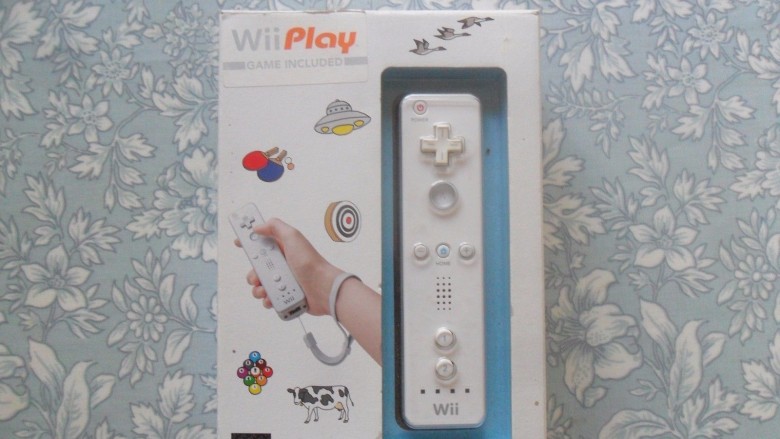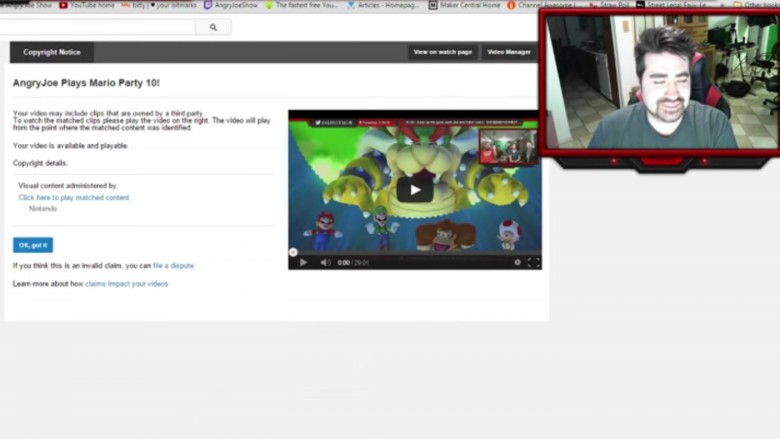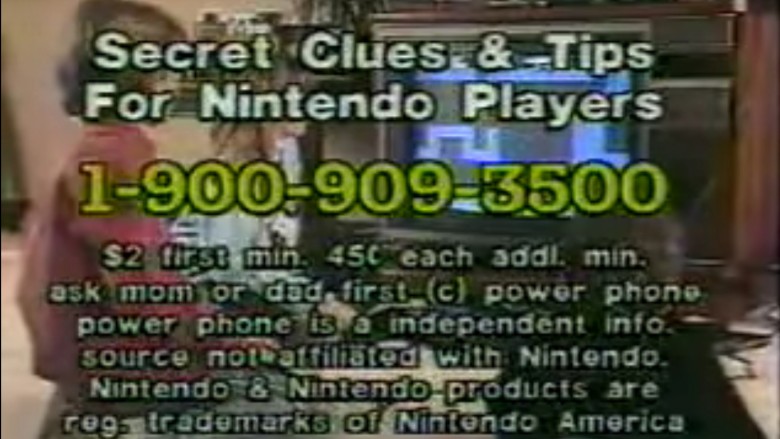Secrets Nintendo Doesn't Want You To Know
Nintendo has created some of the most beloved characters in video game history. However the company itself has been around way longer than Mario. A company that was founded back when Jack The Ripper was still on the loose winds up with a lot of skeletons in their closet (even more than ol' Jack). Of course, then you get folks like us, who get perverse pleasure removing them from the closet. The skeletons, that is.
They started out making playing cards associated with the Yakuza
Nintendo was founded in 1889 to make hanafuda, a specific type of Japanese playing card. The game has a distinctly Japanese look, with a nearly indecipherable symbology of mountains, flowers, weird animals and whatever-the-toss an Akaname ("Filth Licker") is. The name of the company, Nin-Ten-Do ("luck-heaven-hall" or "leave luck to Heaven") was itself a gambling reference to placing your luck in the hands of the gods. The game itself had been illegal in Japan until three years prior, and was still associated heavily with organized crime. In fact, the Japanese crime syndicate Yakuza is actually named after a losing hand in hanafuda. You don't exactly need to be a late-night television detective to notice a relation.
When you produce the playing pieces for a game associated with organized crime, you inevitably get their attention. Nintendo's first headquarters was in an area of Kyoto well associated with the Aizukotetsukai, one of the oldest and most powerful branches of the Yakuza. Not to say that Nintendo as a company was run by criminals, because please don't sue or murder us, but criminals were certainly using their products.
Gunpei Yokoi, who would later develop the Game Boy, got his start in the company by inspecting the machines that produce the cards. Cards with imperfections could be used to cheat (you want the backs of any playing card to be 100% uniform, so nobody can guess what they are), so scouting for printer defects was extremely important. By World War II, they had branched out into making other sorts of playing cards (including decks printed with images of naked women because this is Japan). Even now, after multiple business ventures culminating on their video game empire, the suspected association with gambling and organized crime persists, as even a pre-internet conspiracy theory blamed the Yakuza for the tragic auto accident death of Gunpei Yokoi in 1997.
They also owned "Love Hotels" which are exactly what they sound like
While the manufacturing of playing cards were the foundation of the company, it wasn't enough for a post-industrial company to grow from. As such, Nintendo began to branch out into other industries, some of which were equally sketchy, if not moreso, than gambling. Case in point: throughout the 1960s, Nintendo ran "Love Hotels," which charged by the hour. If you're thinking "wow, that is nowhere near enough time to get a good night's sleep," then go back to playing Super Mario, because you may not be mature enough to finish reading this entry.
These "Love Hotels" did offer all-night rates, but only after 10pm, and it's clear that most business was done by folks wanting discreet, quick encounters. They even had a number pad and pneumatic tube payment system to minimize customer engagement with staff, increasing this discretion and catering to customers with a Jetsons kink. Unfortunately, the locations, or even any photos, of these famous love hotels have been lost to time, after Nintendo worked to clean up their image in the 1980s. Tough to sell Mario going bonkers after Peach kisses him on the nose when you've got full-fledged sex nests on your resume.
They spent the 1960s and 1970s struggling with finding successful products
Through the '60s and '70s, Nintendo realized being associated with questionable legality isn't sustainable, and branched out into all sorts of unusual business ventures. They made vacuum cleaners, instant rice, and even produced a short-running television station. As a counterpart to their love hotels, they also ran a taxi service called Daiya. The service was actually fairly successful, but CEO Yamauchi wound up selling it over disputes with driver unions regarding pay rates. That and the other drivers were complaining about the banana peels Daiya's drivers kept chucking on the road.
Later attempts to branch out included patenting nearly everything you now find in the toy aisle of a Dollar Store. Game Boy inventor Gunpei Yokoi designed several of these toys, including a radio-controlled "toy" vacuum cleaner that was practically an ancestor of the Roomba, and the first prototype of those "grabby arm" toys that you associate with old Warner Bros cartoons. The latter, Ultra Hand, became Nintendo's first million-seller, and helped get the company out from under their debts, an unexpected and absurd windfall you would also expect to only see in a cartoon.
They also developed a set of plastic interlocking blocks that earned them a lawsuit from LEGO, because of course it did. This setback just inspired them to make the blocks in odder, less "blocky" shapes, and releasing kits modeled after popular Tokusatsu (think Power Rangers, but for adults) that have since become incredibly valuable collectors' items.
Iconic characters were often (unflatteringly) crafted after real people
Many fans of the Mario series of games probably know that Mario wasn't originally his name. He started out as "Jumpman" in the Japanese version of Donkey Kong, and the Mario moniker came from the American Nintendo office localization because he resembled their landlord, Mario Segale. That anecdote itself is pretty fun and harmless, but a revelation from an old issue of Nintendo Power reveals the unpleasant origins of a recurring Mario villain.
Designer Shigeru Miyamoto admits that a new enemy in Super Mario 3, the Chain Chomp, was based on a childhood experience encountering a dog that would have mauled him if not for a tied leash. That's pretty disturbing, but you want scandalous? Well, here's how he talks about "Boos," the ghosts that haunt the castles throughout the series — this is the backstory he gives about them: "[Co-designer] Takashi Tezuka got an idea about putting his wife in the game. His wife is very quiet normally, but one day she exploded, maddened by all the time he spent at work. In the game there is now a character that shrinks whenever Mario looks like it, but when Mario turns away it gets large and menacing."
That, there, is an exceptional level of petty passive-aggressiveness. We're almost impressed.
The Game Boy was originally intended as a cheap short-term project
Gunpei Yokoi, who is, has, and will be mentioned multiple times in this article, is considered the "Father of the Game Boy". However, equal credit should be given to Satoru Okada, who saw a lot more potential in the product than its "father" did, a scenario familiar to many of us professional writers.
Yokoi's most prestigious success in the company was through his design of simpler toys and the series of Game & Watch systems, and he had similar aspirations for the Game Boy project. Because remember how much replay value Tiger Handhelds had? For that matter, remember Tiger Handhelds at all?
Ultimately, Yokoi's hope was to move the company away from the console game market altogether. He was frustrated by elaborate role-playing games and action platformers with inconvenient things like "plot" and "distinguishable characters," which he felt wound up too much like "interactive movies" and less like actual, you know, games. Clearly he longed for the nuanced experience of Pong.
It was also Yokoi's idea to make the system black-and-white, even though they absolutely had the technology to make it color. He intended for it to be a handheld system, not much more complicated than the old Game & Watches, with the opportunity to play simpler, more retro-style games. It was only through Okada's persistent protests against his company superiors that the project was fleshed out into the handheld system that almost immediately dominated the market, even above technologically superior, color handhelds of the time.
The Virtual Boy was doomed before it could even get off the ground
The allegedly migraine-inducing 3-D game system Virtual Boy is considered one of Nintendo's biggest, most confusing flops. Folks familiar with more modern VR gear would find the Virtual Boy's static standing bipod configuration baffling. "How does this even count as 'virtual'?" you might ask, which is very likely what customers that avoided the system as if it was poisoned thought as well.
In the mid '90s, thanks to things like Lawnmower Man and Johnny Mnemonic, fascination with the capabilities of Virtual Reality landscapes was on the rise. In response, a company called Reflection Technology started work on a monochromatic LED-based display called the Private Eye, that was relatively cheap to manufacture and relatively low resource-consumption to maintain. If you ever wondered why the display of the Virtual Boy was red and black, it was because of this oscillating LED technology, and not some sort of Illuminati conspiracy to burn people's eyes out.
After a few years shopping the technology around, they found themselves at the desk of Gunpei Yokoi. At this point, well after the success of Game Boy, Yokoi had moved away from engineering and into R&D, but this particular project caught his eye because of the simple monochromatic display combined with a futuristic look and appeal. He presented the project to the higher-ups, and the project was greenlit.
Unfortunately, problems began from the moment they started building. Tons of lag and the heavy shielding around chips (because of worries about EMF radiation that close to a customer's brain) caused the abandonment of a more "goggle-like" VR system, in favor of the unpopular table-top model. They couldn't secure a more powerful CPU system for it, either, settling for a Game Boy-like battery-powered chipset which was feeling pretty archaic by 1995. Studies over whether the system would be harmful to customers' eyes (it wasn't, though it sure felt like it after an hour playing the thing) could not be completed in time, reducing customer faith in the product. Even the name set it up for failure, because it wasn't virtual and it sure as hell wasn't the Game Boy. A premature release of the system, which hadn't been completed to project goals, ultimately rang the death knell of the product.
Nintendo basically created their own biggest competitor through bad business deals
Mentioned once in a few early-90s gaming magazines and then never, ever again, the abandonment of the Super Nintendo CD System is one of the most colossal and embarrassing missteps in company history, a source of unforeseen consequences as severe as when Jack Napier fell into the chemical vat in Batman.
Nintendo was working together with Sony to create a CD-based system that could have been the most impressive video game console on the market. Unfortunately, the agreement they had with Sony was sub-optimal, as far as Nintendo was concerned, so they were looking to back out of the project. Instead of re-negotiating the deal, they snuck around their contract and collaborated with Philips CD to make literally the worst games ever released in human history. It didn't work out great for Philips either, who wound up losing a billion dollars producing this awful Franken-system nobody liked. Basically, Nintendo soiled themselves because the bathroom was out of toilet paper.
This double-dealing caused Sony to break their contract and independently develop the Playstation, which ushered in an entirely new era of video games that Nintendo was now (and still is) behind in. Companies like Square dropped Nintendo like a rock soon as they realized the quality of games they could release on CD, over Nintendo's continued insistence on cartridges. Which is basically like ... um ... we don't really have an analogy for that level of screwup.
Nintendo knew Wii straps would break before the system release
In 2006, Nintendo released the Wii console, with its innovative controller ... that many users found themselves inadvertently flinging across the room, smashing valuables and giving family members concussions because of faulty wrist straps. This led to a massive class-action lawsuit, which revealed that Nintendo was fully aware of the design flaw before release, but went ahead with the release anyway, presumably because you gotta make dat money money somehow.
Nintendo attempted damage control, by offering to replace the wrist straps of 3.2 million already purchased controllers, but the lawsuit continued for years, racking up untold legal fees until it was eventually dismissed in 2010. The judge who dismissed it, by the way, claimed that the strap might have never been designed to keep the controller from flying out of your hands, but rather simply be a convenient way to hold onto your controller so you don't lose it. Yes, Your Honor. That's what all those warnings in our Wii games about tightening the strap were about. So you don't lose them behind the couch cushions. Right.
Nintendo has been filing DMCA notices against popular Youtube reviewers, insuring their games won't be reviewed
Starting in 2015, popular Youtube game review channels received a shock, as multiple takedowns of their videos came specifically from Nintendo-based properties. Considering the work and creation of these videos amounted to a lot of these reviewers' livelihood and income, it sparked a lot of outrage. This led to many of these content creators swearing off ever reviewing a Nintendo game ever again. So ... good job?
DMCA notices on Youtube are getting noticeably out of control, to the point where companies are issuing takedown notices on their own videos, due to shoddily executed automation. It's bonkers, and it does little for brand loyalty when it's done against fair use material. Basically, "Fair Use" protects works that use small bits of a source to add another level of critique, like with a review, academic analysis, or parody. Imagine a movie review where they couldn't show clips, and you can understand how necessary it is to see the property being reviewed.
While prevention of piracy is definitely a worthwhile concern, nobody can argue that watching a video review of a game being played distributes an illegal facsimile of it. People watch these reviews to make purchase decisions, for help with areas they're stuck on, or simply to watch the charismatic reviewers goof off. Shutting down these reviews provides no benefit to Nintendo, while also cutting off free marketing viewed by millions of potential fans/consumers.
The Nintendo Hotline counselors barely knew what they were doing
In the pre-internet days, finding game hints was either a matter of dubious word-of-mouth, slogging through until your frantic button jamming produced results, or shelling out cash. You could subscribe to various gaming magazines, but there was a delay between game and magazine release, and they may not even cover the game you are looking for. What if you needed to know about a specific game right away?
Enter the Nintendo Hotline. In the '80s, everyone from Freddy Kreuger to Motley Crue had a pay-per-minute hotline you could call, and Nintendo Power magazine was no different. At those prices (yes, kids, you once had to pay for individual phone calls), you'd expect to be speaking to someone with an inside line to game companies and distributors for the best player info. Unfortunately, you'd be getting someone not a whole lot different than any other call center customer service agent you may encounter.
According to former counselor Sean Bloom, all it took to get the job was heading to his local temp agency, growing a mullet, and filling out a test to prove he knew what the whistle does in the original Legend Of Zelda. Recently, an authentic in-company counselor guide turned up in a collection in Seattle — while you would expect a Bible of inside-scoop tips & hints, in actuality it was a pile of maps and notes written by hand, and pages torn from Nintendo Power strategy guides. So if you had a subscription and never threw anything away, you already had all the info the hotline people did.
Even so, it still sounded like a really sweet gig, although we might have second thoughts about all the mullets.

